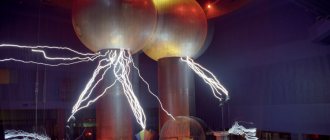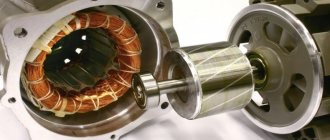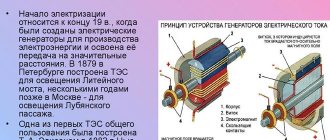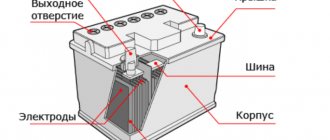Scientists have long been looking for an environmentally friendly and cheap alternative to traditional fuels. A hydrogen generator is one of the promising ways to generate energy for economic purposes, including for heating private houses. We will understand on what principles the device operates, what features and advantages it has, and how do-it-yourself models are applicable to heating systems.
The principle of operation of a hydrogen boiler for heating a private house Source fastbuildings.ru
Features of the use of hydrogen
Monatomic hydrogen is the most common chemical element not only on Earth, but also in the Universe. It easily interacts with most non-metals, so most of it is bound in water and organic compounds.
In industry, hydrogen is produced in several ways: most of it is from the processing of coal, gas and oil, and only 4% is from the electrolysis of water (the so-called green hydrogen).
It turns out that the fuel - water, the source of hydrogen for the hydrogen generator - is available for free or for a symbolic amount. And if you assemble the device yourself, you can get amazing savings.
But in practice, everything is not so rosy. A water molecule consists of two hydrogen atoms and an oxygen atom. The bond between atoms is strong, and to break it, an external source of energy is needed. The most convenient source is electricity, the most profitable process is electrolysis.
Areas of hydrogen use Source ppt-online.org
In industrial installations, a closed cycle is implemented when water vapor returns to a liquid state (condenses). To produce condensate, water vapor is cooled, which means additional energy costs. Industrially produced gas is used for different purposes and therefore has different degrees of purification. Hydrogen with a low degree of purification is used in welding equipment, while highly purified hydrogen is used as a fuel.
Device selection
When choosing a hydrogen generator, the price of the model usually reflects its capabilities. The more there are, the more convenient the device is for regular use. The most important parameters include:
- Microprocessor control for precise setting of operating parameters.
- Quality of purification of the finished product: it is desirable that the equipment supports multi-stage preparation of H2.
- The efficiency of the electrolyser: the higher it is, the less energy is spent on maintaining the splitting of water.
- Possibility of topping up distillate without turning off the device to ensure process continuity.
- Sophisticated protection against increased current in the electrolysis chamber or in case of excess pressure in the supply pipes. It is optimal if the device immediately turns off or automatically changes operating parameters.
- Adjustable performance H2. The presence of this function allows the operator to control the volume of gas generated. The load on the electrolyzer is reduced, its service life is increased without the need for replacement.
- Temperature control of the oxygen afterburner. The more parameters that allow you to adjust the pure hydrogen generator, the easier it is to debug the production process.
- Indication of the humidity of the substance (eliminates the risk of moisture entering the supply lines).
There are other parameters that it is recommended to pay attention to before buying a hydrogen generator: price of the device, productivity, degree of gas purification, pressure stability, water content of the finished substance, ramp-up time, power consumption and dimensions.
Principle of hydrogen production
Electrolysis is the decomposition of water into hydrogen and oxygen. The reaction occurs under the following conditions:
- Metal plates are lowered into the water, close to each other, and connected to a voltage source.
- To increase the reaction rate, a catalyst, such as liquid lye, is used.
- The chain is completed through water, and the water molecule (H2O) breaks down into two hydrogen atoms and one oxygen atom. The result is detonating gas (Brown's gas), an explosive mixture of hydrogen and oxygen.
- The explosive gas is collected, after which it can be used to heat the house (burned in a boiler). Splitting water produces hydrogen, which burns well, and oxygen, which supports combustion.
Methods for producing hydrogen Source atomic-energy.ru
Industrial production units
Hydrogen has long been effectively used as an energy carrier in various sectors of the economy. Hydrogen electric generators are produced for private households, in which gas is released as a result of electrolysis, and the resulting hot steam enters the home heating system.
The use of factory-made electrolytic units has the following specifics:
- They comply with international safety and environmental standards.
- To purchase and install, you will need permission from Rostechnadzor, which means you need to prepare a package of permits (certificate of conformity GOSTR, hygienic).
- The generator works in conjunction with a boiler and pipes. Liquid lye is used as a catalyst for the process. The system is charged at least once a year.
- The most effective returns are demonstrated in underfloor heating systems or baseboards;
The average household unit consists of the following elements:
- Electrolyzer. A device that separates water molecules into their component parts.
- The electronic unit. Includes transformer and rectifier.
Industrial plant for hydrogen production Source assets.bwbx.io
- Device for water preparation (for demineralization).
- Control panel with automatic control. Controls process performance.
- Monitoring system. The gas analysis system is configured to search for possible leaks and is capable of preventing an emergency.
- Condensate cooling system.
The advantage of factory-made devices is their compactness, safety and efficiency. To produce one cubic meter of hydrogen, 0.5 liters of water and 3.5-4 kW of electricity are consumed.
See also: Catalog of companies that specialize in complex installation of internal engineering systems
Pros and cons of technology
An industrial water generator is a tempting solution that, using detonating gas, can significantly reduce home heating costs. But the method also has additional bonuses:
- Environmental friendliness. The device is harmless to the environment and humans. The result of the work is clean energy and water vapor.
- Efficiency. Efficiency reaches 90-95%, the generator operates silently.
- Long-term operation. Manufacturers guarantee uninterrupted operation of the unit for 20-25 years.
- Installation work does not involve the installation of additional chimneys.
Compact laboratory generator Source stroy-podskazka.ru
- Safety. The generator is equipped with thermal and temperature sensors that monitor operation around the clock.
The disadvantages of hydrogen generators include the following features:
- High price. The high price tag is explained by the use of expensive materials and catalysts, and the use of security systems.
- The need to attract specialists to provide service at a professional level. Independent maintenance, and especially manufacturing, can lead to dangerous consequences.
- Additional expenses. From time to time some parts will need to be replaced, and you will also have to buy a catalyst.
A water generator made at home has additional disadvantages:
- Low energy efficiency. For homemade hydrogen units, it is several times lower than the efficiency of traditional heating systems (solid fuel, gas, electric boilers).
- Explosion hazard. Errors and carelessness in assembly, improper operation, and lack of safety systems can result in depressurization and sometimes an explosion.
A type of device is the Meyer hydrogen cell Source ytimg.com
The main advantages of hydrogen heating
This method of heating a house has several significant advantages, which are responsible for the growing popularity of the system.
- Impressive efficiency, often reaching 96%.
- Environmental friendliness. The only by-product released into the atmosphere is water vapor, which is not capable of harming the environment in principle.
- Hydrogen heating is gradually replacing traditional systems, freeing people from the need to extract natural resources - oil, gas, coal.
- Hydrogen acts without fire; thermal energy is generated through a catalytic reaction.
The feasibility of making a generator yourself
Ideally, a working installation consumes 0.5-0.7 liters of water per hour and produces 1300-1500 liters (about one and a half cubic meters) of gas. The gas then flows to the boiler, where it burns and heats the water in the heating circuit. In industrially implemented units, 3-3.5 times less energy is spent on gas production than it gives up for heating.
Brown's gas technology is a new approach to energy supply; Hydrogen boilers are still a novelty on the foreign and Russian market. Therefore, owners familiar with the technology assemble such an installation themselves.
Assembling a hydrogen plant at home is rarely as effective (or even effective) as industrial counterparts, and therefore often turns out to be unprofitable. In order to obtain the required volume of gas, you will need an electrolysis installation of sufficient power, which is selected based on the square footage of a particular home.
The process of gas formation on the plates Source ytimg.com
Types of hydrogen water generators
Currently, the Russian market is replete with all kinds of hydrogen water generators. How not to get confused among the wide range of devices for enriching water with molecular hydrogen? How to choose a high-quality hydrogen water generator without overpaying? Let's first understand what types of hydrogen water generators are being produced today. We can classify all devices for saturating water with hydrogen according to their purpose: 1) generators of hydrogen water intended for drinking Such devices are pocket-sized, portable and stationary 2) devices intended for inhalation On the Russian market you can find both portable and stationary breathing generators hydrogen water 3) hydrogen water generators intended for skin care These can be hydrogen sprays or mists (they are often called nano sprays), as well as spa capsules. We wrote in detail about the types of these devices and their features in the article “Types of hydrogen generators water"
Devices that enrich drinking water with hydrogen are pocket-sized, portable and stationary. The choice between these types of hydrogen water generators is determined by a person’s lifestyle and the number of users. In this article we will look at the main criteria for choosing a portable hydrogen water generator.
Production of a prototype
And yet, attempts to find a solution to how to make hydrogen to use for heating a home do not stop. Before making a full-fledged hydrogen generator, it is useful to assemble a prototype operating sample. The simplest electrolyzer consists of the following elements:
- An airtight container with thick walls, glass or plastic.
- Electrodes. They are made of metal, immersed in a container of water and connected to a power source.
- A tube for removing flammable gas leading to a second container of water (it serves as a water seal).
The installation for producing hydrogen using the electrolytic method operates only on direct current. Therefore, the power source can be a battery or, for example, a car charger.
Experimental model with plates Source ytimg.com
The installation produces gas as follows:
- The electrodes are immersed in water and voltage is applied to them. It is advisable to add a catalyst (a little acid or alkali) to the water; you can make do with salt at home.
- The electrolysis reaction begins in the water and gas bubbles will appear around the electrodes. Hydrogen will be released near the cathode, oxygen - near the anode.
- The mixture of gases is forced into the hydraulic seal. This helps to separate water vapor from the mixture and at the same time avoid an accidental outbreak of flammable gas in the container.
- After the water seal, the gas mixture is displaced through another tube to the burner, where it is burned to form water.
Since such a system is operational, but still experimental, too high a voltage should not be applied to it. Water heated above 65°C will evaporate too quickly; Excess water vapor will appear and you will not be able to light the burner.
Hydrogen generator model Source 1-teplodom.ru
How to choose a portable hydrogen water generator for drinking
When choosing portable hydrogen generators, we recommend paying attention to:
Health safety of devices
Devices must be safe and intended for food use. Therefore, hydrogen water generators must meet the following conditions:
- A proton exchange membrane must be used (Why is an SPE/PEM membrane needed in hydrogen water generators?)
- The separation of hydrogen from chlorine (actually poison), oxygen, ozone and other gases formed during the electrolysis process must be ensured.
The presence of a proton exchange membrane does not in itself guarantee this separation. There are many proton exchange membrane hydrogen water generators in which hydrogen, after generation, is mixed with oxygen and chlorine in one glass. Often these are devices of the lower price segment, like these from aliexpress https://h2h2o.ru/kak-vybrat-generator-vodorodnoj-vody-opyt-pokupok-na-aliekspress Why are such hydrogen water generators produced? Previously, hydrogen water generators were without PEM membrane. After the emergence of demand for devices with a membrane, manufacturers decided to insert it into the models of hydrogen water generators they were already producing, without changing the overall design of the devices. And initially, water generators without a proton exchange membrane did not provide for the separation of electrolysis products. Basically these are inexpensive Chinese or Taiwanese devices. However, they are widespread in Japan. From Japan they come to Russia and are sold as Japanese devices at a high price. To make sure that hydrogen is separated, you need to generate generation from a solution with table salt - it should not smell like chlorine.
- Only platinum and not iridium catalysts should be used. Catalysts made from other materials can be used for technical purposes. When producing hydrogen water for drinking, catalysts other than platinum are not used, since there can be no confidence in their safety.
How can cheap devices be dangerous?
| Paino proton exchange membrane | Proton exchange membrane copies. Formation of blue plaque. |
- The electrodes must be reliably coated with platinum - this can prevent the release of metal ions into the water during operation of the device. Electrodes made of nickel, copper-nickel alloy, etc. are not acceptable. Devices in the lower price segment (cheaper than 10,000 rubles as of fall 2021) use such electrodes. Drinking water from such devices means putting your health at risk.
Comparison of electrodes
| An example of a quality electrode | Example of industrial coating | Electrode-membrane assembly H2Life |
Devices must be effective
Devices must saturate the water with the maximum possible amount of hydrogen.
What concentration in water is therapeutic https://h2h2o.ru/kakaya-kontsentratsiya-vodoroda-v-vode-yavlyaetsya-terapevticheskoj-skolko-vodorodnoj-vody-luchshe-pit
How ultra-high concentration hydrogen water generators work https://h2h2o.ru/kak-rabotayut-generatory-vodorodnoj-vody-sverkhvysokoj-kontsentratsii
Ease of use
Operating experience has shown that:
- A mechanical button is more convenient than a touch button.
- The presence of a screen is a great advantage, as it makes it possible to monitor the remaining battery charge, see which generation mode is turned on, and how much time is left until the end of generation.
- An insufficiently capacious battery that requires frequent charging makes the device inconvenient, since it is not recommended to use the device while charging.
Maintainability of the device
The maintainability of the device is an important criterion when choosing a hydrogen water generator. For example, the battery of a device is designed for a limited number of recharges, and it cannot be changed in all devices. In Paino Portable and H2 Nano premium devices - you can.
Repair and post-warranty service are possible for the Paino and H2 nano Premium devices.
The service life of the membrane depends on the hardness of the water and the intensity of use; replacement of the membrane is provided only in hydrogen water generators from Paino Technology, but you also need to take into account the planned service life of the electrode-membrane cell, and Paino’s is relatively short.
Sturdy body of the device
People often carry portable hydrogen generators with them - for training, to the office, for walks, where an expensive device can be dropped, hit..., so it is important to pay attention to the impact resistance of the case. In our experience, the strongest aluminum housings are found in the H2 nano Premium and H2 nano mini devices. Paino devices also have a robust body.
Warranty and post-warranty service
Since any device has its own lifespan, before purchasing, we recommend that you immediately familiarize yourself with where warranty and post-warranty service will be performed, so that in the event of a warranty case, you cannot find a seller and repair the device.
Additional options
A common option is to equip the water generator with a cannula for inhalation. Although we hear feedback from our customers about the positive effect of this, for example, with asthma, we doubt its effectiveness. The power of the hydrogen flow produced by the hydrogen water generator is too small for breathing (more details:).
Additional accessories such as cases or bags can be useful.
Water tank volume
In our opinion, the volume of the water container should not be large. It should hold as much water as you can drink at one time. The large volume of the container reduces the concentration of hydrogen. It is also recommended to drink hydrogen water immediately after production. This is due to the fact that in 50 min. under normal conditions - room temperature (25 °C) and normal pressure (1 atm = 760 mm Hg), the hydrogen concentration is halved.
Problems in manufacturing a working generator
Craftsmen planning to manufacture a working installation plan to use hydrogen both for heating and for gas welding work, or as automobile fuel. When making a hydrogen generator for heating, the electrodes are metal plates with an approximate number of 30-70 pieces. The size of the plates starts from 10x15 cm, the material is stainless steel.
A block is assembled from the plates, isolating them from each other with rubber gaskets; the block is placed in a sealed container. A homemade fuel cell requires a water pump to function; its operation will be controlled by a level sensor installed inside the generator.
Making the installation effective is extremely difficult, as you will have to face the following problems:
- Stainless steel, which is usually used to make plates, will not last long as electrodes; you need an alloy with nickel.
- Installation dimensions are important to generator efficiency. Professional calculations of all parameters are needed, from the composition of the water to the required power. Even the size of the gap between the electrodes affects the operation of the device.
Much depends on the quality of the metal Source ytimg.com
- It is difficult to ensure work safety. What matters here is the tightness of the container with electrodes, all hoses, as well as the cross-section of the wire from the power source.
- You will need to assemble a control circuit for operating voltage and current; you cannot do without special equipment, for example, a frequency meter and an oscilloscope.
The problem with a hydrogen generator at home is hidden in the economic issue. The fact is that, unlike ideal conditions, all transformations involve a loss of energy. In addition, it will not be possible to burn hydrogen at the maximum temperature (3000°C), not a single boiler can withstand this, and the heat transfer will be much lower than declared.
During operation, the installation will spend more electricity than the system receives thermal power after burning the generated gas. The generator will only pay for itself if there is access to free electricity.
You will spend 2-3 times less money if you install an electric boiler and heat your home directly, without an intermediate generator. This is a much more profitable and safe solution, taking into account the possibility of an explosion of a hydrogen unit if installation and operation rules are not respected.
One of the options for plates at home Source ytimg.com
Briefly about the main thing
A hydrogen generator produces gas through the process of electrolysis. The development is considered promising, as it makes it possible to obtain valuable fuel, hydrogen, in a simple way from ordinary water.
The electrolyzer is based on several metal plates. They are immersed in a sealed tank filled with electrolyte (water with a catalyst added). A current passed through a solution splits water molecules into hydrogen and oxygen; the gases are then used for their intended purpose.
Making a generator with your own hands is considered a risky endeavor, since its design is technologically complex and unsafe. In addition, in real conditions it is difficult to make the installation effective, and most of the implemented projects demonstrated on the Internet are unprofitable.











